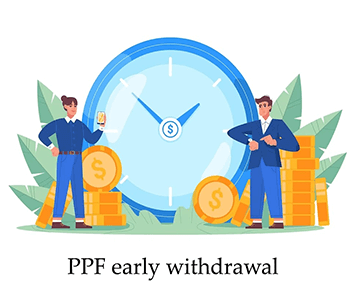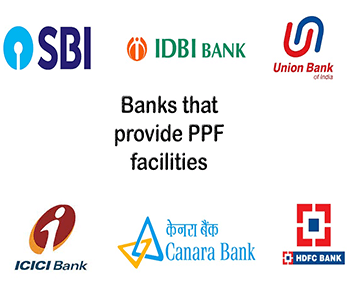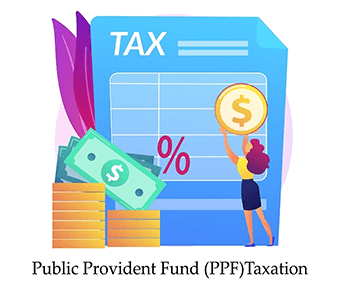What's Inside?
- What is PPF (Public Provident Fund)?
- Benefits of PPF (Public Provident Fund)
- Who is eligible for PPF Account?
- How to open a PPF account online?
- How to open a PPF account offline?
- How the interest on PPF is calculated?
- Documents required for opening a PPF account
- What happens after the maturity of PPF account?
- PPF early withdrawal
- Loan against Public Provident Fund (PPF)
- Best PPF Accounts in India
- List of the Banks that provide PPF facilities
- List of all forms in a PPF account
- How to open Post Office PPF Account?
- Documents required for opening Post Office PPF account
- How to close Post Office PPF Account?
- How to open ICICI PPF account online?
- Documents required for opening PPF account with ICICI
- How to close ICICI PPF Account?
- How to open SBI PPF account online?
- Documents required for opening PPF account with SBI
- How to close SBI PPF Account?
- What is the best time to invest in PPF?
- PPF Taxation
- Which is Better?
What is PPF (Public Provident Fund)?
The Public Provident Fund (PPF) is a savings scheme provided by the Government of India. It helps people save money for their retirement over a long period of time. Here are some key points about PPF:
- PPF accounts can be opened at post offices or authorized banks.
- You need to deposit a minimum of Rs. 500 per year and can deposit a maximum of Rs. 1,50,000 per year.
- The PPF account matures after 15 years from the end of the year in which it was opened.
- After maturity, you can extend the account in blocks of 5 years.
- The interest on the account is set every quarter and is paid by the Government of India.
- The current interest rate is 7.1% per year, and it is compounded annually.
- The interest earned on the PPF account is tax-free.
- You can make a maximum of 12 contributions in a year.
- The interest and maturity proceeds are exempt from tax under Section 80C of the Income Tax Act.
- You can transfer your PPF account between branches of the same bank or from a post office to a bank.
These features make PPF a popular and tax-efficient savings option for individuals planning for their retirement.
Benefits of PPF (Public Provident Fund)
Public Provident Fund (PPF) is a popular investment scheme in India with many benefits for investors. Here are the advantages of joining PPF:

- Tax Benefits: You can claim tax benefits under Section 80C of the Income Tax Act. The maturity amount and the interest earned on it are also tax-free. This helps you save on taxes and reduce your taxable income.
- Safe and Guaranteed Returns: PPF is backed by the Government of India, providing complete capital protection and risk-free returns. You can invest without worrying about losing your money.
- Higher Interest Rate: The PPF interest rate is usually higher compared to fixed deposits offered by many banks. It is currently 7.1% per annum, which is compounded annually. This means your money grows faster and you earn more interest.
- Low Maintenance Cost: To keep your PPF account active, you only need to deposit a minimum amount of Rs. 500 per year. There are no additional yearly maintenance charges, making it affordable for everyone.
- Flexible Tenure: The PPF scheme has a tenure of 15 years, but you can extend it in blocks of 5 years after maturity. You can decide whether to continue contributing or withdraw the money after the initial 15 years.
- Convenient Deposits: You can deposit money into your PPF account using cash, demand draft, cheque, or online transfer, based on your convenience. This makes it easy to contribute regularly.
- Loan Facility: PPF offers a loan facility where you can avail a loan at a reasonable interest rate. You can apply for a loan between the third and sixth year of opening the account. This is useful for short-term financial needs.
- Long-Term Investment: PPF is a great long-term investment plan due to its 15-year lock-in period. It provides a good interest rate and helps you build a substantial corpus over time.
Who is eligible for PPF Account?
PPF is a special savings scheme provided by the Government of India. It helps people save money for their retirement by making regular contributions over a long period of time. Before choosing PPF, it’s important to know who is eligible to participate. Here are the eligibility criteria for the Public Provident Fund (PPF):

- Indian Citizenship: To benefit from PPF, you need to be an Indian citizen. Any Indian citizen can take advantage of this scheme and open a PPF account.
- PPF for Children: Yes, you can also open a PPF account for your child. Parents can open PPF accounts on behalf of their minor children.
- NRI Status: Non-Resident Indians (NRIs) are not allowed to open new PPF accounts. However, if you were an Indian resident when you opened a PPF account and later became an NRI, you can continue the account until its maturity.
- Multiple and Joint Accounts: It is not permitted to open multiple PPF accounts or have joint accounts under this scheme. Each individual can have only one PPF account in their name.
How to open a PPF account online?
If you want to open a PPF account online, follow these steps:
Step 1: Log in to your online banking account and look for the option to open a PPF account.
Step 2: Click on that option, and you’ll be taken to a new webpage where you can fill in the required information to open the PPF account.
Step 3: Enter all the necessary details and specify the amount you want to invest.
Step 4: If you prefer, you can set up automatic deductions from your bank account at regular intervals to deposit into the PPF account.
Step 5: You’ll receive an OTP (One-Time Password) on your registered mobile number. Enter that OTP in the provided field.
Step 6: Once you’ve completed these steps, your PPF account will be successfully opened. Make a note of the account number for future reference.
Some banks may require you to print out the details and reference number generated and submit them, along with your KYC (Know Your Customer) documents, to the nearest bank branch.
How to open a PPF account offline?
A PPF or Public Provident Fund is a good investment option for people who want to save and grow their money in the long term. It was introduced by the National Savings Institute of India’s Ministry of Finance in 1968.
If you want to open a PPF account, you can do so at a bank or the post office. To open an account offline, you need to follow these simple steps:
- Download Form-A from the bank’s website where you want to open the PPF account.
- Fill out the form and visit the nearest bank branch.
- Submit the form along with the required documents.
- You will need to deposit Rs. 100 when opening the account.
- The bank will process your request, and your PPF account will be opened with them.
How the interest on PPF is calculated?

The interest is calculated based on the balance you have in your account on the 5th of every month. Each month, the interest for that month is applied to the balance. This process is repeated for all twelve months of the year. At the end of March, the total interest for the year is credited to your account. This is why you don’t see your money increasing throughout the financial year.
The government announces the annual interest rate for PPF accounts once a year. To calculate the annual interest rate, the monthly interest rate is determined by dividing the annual rate by 12. The government sets the interest rate for PPF accounts and other saving schemes based on the rates of government bonds. The interest rate for PPF accounts and other savings schemes is adjusted every quarter based on the returns of 10-year government bonds.
It’s important to note that you can earn a full year’s interest on any deposit made between April 1st and April 5th. If you deposit money later in the year, it will earn interest only for the remaining months.
Documents required for opening a PPF account
The Public Provident Fund (PPF) has been a popular investment scheme for many years in India. People like it because it helps them save taxes, offers decent returns, and is considered safe since it is backed by the government. It can be a good addition to your investment portfolio.
To open a PPF account, you need a few important documents:

- PPF Account Opening Form (Form-A): Fill out this form to open a PPF account. You can get it from authorized banks or post offices.
- Proof of Address: Provide a document that verifies your address, such as a utility bill or a government-issued address proof.
- Passport-size Photographs: You will need two passport-size photographs of yourself for the account opening process.
- KYC Documents: To verify your identity, you need to submit KYC (Know Your Customer) documents. These can include your PAN Card, Voter ID card, Aadhaar Card, or Driving License.
- Nomination Form (Form E): Fill out the nomination form to specify a nominee for your PPF account. You can get this form from authorized banks or post offices.
By submitting these documents and forms, you can open a PPF account and start saving for your future. It’s a simple process, and the authorized banks and post offices can guide you through the required steps.
What happens after the maturity of PPF account?
After 15 years of opening a PPF (Public Provident Fund) account, it reaches its maturity. At this point, the account holder has three choices:

- Withdrawal of Maturity Amount: The account holder can withdraw the entire amount, including the interest earned, after completing the 15-year maturity period.
- Extension of PPF account without further contribution: If the account holder doesn’t take any action within one year of maturity, this option is automatically applied. The account continues to earn interest, but only one contribution is allowed per year.
- Extension of PPF account with further contribution: The account holder can choose to keep contributing to the PPF account even after it matures. However, they can only withdraw 60% of the total PPF amount once per year, and the remaining amount continues to earn interest.
These options provide flexibility to the PPF account holder after the maturity period, allowing them to decide how they want to manage their funds.
PPF early withdrawal
To withdraw a partial amount from your Public Provident Fund (PPF) account, follow these simple steps:

Step 1: Fill out Form C: Obtain Form C from your local bank branch or download it online. It’s the form required for partial withdrawal from the PPF account.
Step 2: Provide necessary details: Fill in your PPF account number and the amount you wish to withdraw.
Step 3: Mention the completed financial years: Indicate the number of financial years that have passed since you opened the PPF account.
Step 4: For minor accounts: If the PPF account is in the name of a minor, you need to provide an additional declaration confirming that the amount is intended for the minor child’s use and that the child is still a minor.
Step 5: Bank/Post office verification: Submit the filled Form C to your bank or post office branch. They will verify details such as the account opening date, account balance, and permissible withdrawals based on PPF rules. They will complete the relevant sections of the form.
Step 6: Choose the withdrawal method: Specify whether you want the withdrawn amount to be transferred to your savings account or issued as a demand draft (DD). Mention your preference on the form and affix a revenue stamp. Sign the form.
By following these steps and submitting the completed Form C, you can initiate the process of withdrawing a partial amount from your PPF account. It’s important to note that premature closure of the PPF account is not allowed within the first five years, except under special circumstances such as life-threatening diseases or dependent children.
Loan against Public Provident Fund (PPF)

If you have a Public Provident Fund (PPF) account, you can borrow money against it starting from the third year. This loan facility is available until the sixth year of your PPF account. Let’s say you opened your PPF account in the financial year 2022-23. You can take your first loan from the year 2023-2024 onwards. However, the loan amount cannot exceed 25% of the balance in your PPF account. To avail the loan, you need to submit Form D.
The interest charged on the loan against your PPF account is 2% higher than the prevailing PPF interest rate. For example, if the interest rate on PPF is 8%, the interest rate on the loan will be 10%.
If the PPF account is opened in the name of a minor, the guardian can apply for a loan on their behalf. They need to submit a certificate to the PPF account office on behalf of the minor. Once the previous loan, along with the interest, is repaid, the PPF account holder can apply for a new loan. However, if the full amount of the previous loan, including the interest, is not repaid, a new loan will not be granted. A PPF holder is allowed to take only one loan per year.
Best PPF Accounts in India
There are several banks and financial institutions in India that offer PPF (Public Provident Fund) accounts. The following are some of the popular and reliable options:

- State Bank of India (SBI): SBI is one of the largest public sector banks in India and offers PPF accounts with a wide network of branches and online banking facilities.
- ICICI Bank: ICICI Bank is a leading private sector bank that provides PPF accounts with competitive interest rates and convenient banking services.
- Punjab National Bank (PNB): PNB is a trusted public sector bank that offers PPF accounts with attractive interest rates and customer-friendly services.
- HDFC Bank: HDFC Bank is a well-known private sector bank that provides PPF accounts with easy accessibility and efficient online banking features.
- Bank of Baroda (BOB): BOB is a reputable public sector bank offering PPF accounts with competitive interest rates and a wide branch network.
- Canara Bank: Canara Bank is a trusted public sector bank that offers PPF accounts with competitive interest rates and convenient banking facilities.
- Post Office: The Indian Post Office is another reliable option for opening a PPF account. It has a vast network of branches across the country and provides secure PPF account services.
List of the Banks that provide PPF facilities
Several banks in India offer Public Provident Fund (PPF) facilities. Here is a list of some prominent banks that provide PPF accounts:

- State Bank of India (SBI)
- Punjab National Bank (PNB)
- Bank of Baroda (BoB)
- ICICI Bank
- HDFC Bank
- Canara Bank
- Axis Bank
- Union Bank of India
- Indian Bank
- Central Bank of India
- Bank of India (BoI)
- IDBI Bank
- Kotak Mahindra Bank
- IndusInd Bank
- Yes Bank
List of all forms in a PPF account
Here is a list of forms commonly used in a Public Provident Fund (PPF) account:
Form A: PPF Account Opening Form – This form is used to open a new PPF account. It includes personal details of the account holder and nominee, as well as the initial deposit amount.
Form B: PPF Deposit Form – This form is used to make additional deposits into an existing PPF account. It includes the account number, deposit amount, and other relevant details.
Form C: PPF Withdrawal Form – This form is used to make partial withdrawals from a PPF account. It requires details such as the account number, withdrawal amount, and purpose of withdrawal.
Form D: PPF Loan Application Form – This form is used to apply for a loan against a PPF account. It includes information about the loan amount requested and repayment terms.
Form E: PPF Nomination Form – This form is used to nominate a person who will receive the PPF account balance in the event of the account holder’s demise. It includes details of the nominee and their relationship with the account holder.
Form F: PPF Extension Form – This form is used to extend the maturity period of a PPF account beyond the initial 15-year term. It requires the account number and desired extension period.
Form G: PPF Account Closure Form – This form is used to close a PPF account. It includes the account holder’s details, reason for closure, and instructions for the account balance.
It’s important to note that the specific forms and their formats may vary slightly between different banks or financial institutions offering PPF accounts.
How to open Post Office PPF Account?
To open a PPF (Public Provident Fund) account at the post office, follow these simple steps:
- Visit your nearest post office or sub-post office.
- Ask for an application form for the PPF account. You can also download the form online if available.
- Fill out the form with your personal details.
- Submit the filled form along with the required KYC (Know Your Customer) documents and a passport-sized photograph.
- You will need to make an initial deposit of Rs. 500 to open the PPF account. You can deposit up to Rs. 70,000 initially. However, remember that the maximum amount you can deposit in a year is Rs. 1.5 lakh.
- Once you submit all the necessary documents and the initial deposit, the post office will provide you with a passbook for your PPF account. The passbook will contain important information such as your name, PPF account number, branch name, and other relevant details.
Documents required for opening Post Office PPF account
To open a PPF (Public Provident Fund) account at a Post Office in India, you will typically need the following documents:
- PPF Account Opening Form: This form can be obtained from the Post Office branch where you intend to open the account. You can also download it from the India Post website.
- Identity Proof: You will need to submit any one of the following documents as identity proof:
- PAN Card
- Aadhaar Card
- Passport
- Voter ID Card
- Driving License
- Address Proof: You will need to provide any one of the following documents as address proof:
- Aadhaar Card
- Passport
- Utility bills (electricity bill, water bill, etc.)
- Bank account statement
- Rental agreement
- Passport-sized Photographs: You will need a few recent passport-sized photographs to be affixed on the account opening form.
How to close Post Office PPF Account?
To close a PPF (Public Provident Fund) account before its maturity period, at least 5 financial years must have passed since the account was opened. Premature closure is allowed for specific reasons:
- Treatment of serious or life-threatening diseases: If the account holder, their spouse, dependent children, or parents require funds for the treatment of such diseases, the PPF account can be closed prematurely.
- Funding higher education: In the case of the account holder or a minor account holder pursuing higher education, the PPF account can be closed prematurely to finance their education.
To close a PPF account at the Post Office, a written application must be submitted to the same Post Office where the account was opened. The application should clearly state the reason for closing the account. Additionally, a copy of the PPF account passbook and supporting documents need to be attached.
If the application is deemed genuine, the PPF account will be closed. However, the account holder will be subject to a penalty for premature closure.
How to open ICICI PPF account online?
To open a PPF (Public Provident Fund) account with ICICI bank through net banking, follow these simple steps:

- Log in to your ICICI net banking portal.
- Go to the “My Accounts” section and select “PPF Account.”
- Click on “Open Now” to proceed with opening the PPF account.
- You will be taken to a new webpage where you need to provide the required details for the account opening.
- Fill in all the necessary information as requested.
- Specify the amount you want to invest in the PPF account.
- If you prefer, you can set up standing instructions for your bank to automatically deduct the desired amount at regular intervals and deposit it into your PPF account.
- An OTP (One-Time Password) will be sent to your registered mobile number. Enter this OTP in the given field.
- Once you’ve entered the OTP, your PPF account will be successfully opened.
- Make a note of the account number for future reference.
Documents required for opening PPF account with ICICI
To open a PPF (Public Provident Fund) account with ICICI Bank, you will typically need the following documents:
- PPF Account Opening Form: This form can be obtained from the ICICI Bank branch or their official website.
- Identity Proof: You need to submit any one of the following documents as identity proof:
- PAN Card
- Aadhaar Card
- Passport
- Voter ID Card
- Driving License
- Address Proof: Any one of the following documents can be submitted as address proof:
- Aadhaar Card
- Passport
- Utility bills (electricity bill, water bill, etc.)
- Bank account statement
- Rental agreement
- Passport-sized Photographs: You will need a few recent passport-sized photographs to be affixed on the account opening form.
- Nomination Form (optional): If you want to nominate someone to receive the proceeds of your PPF account in case of your unfortunate demise, you will need to fill out the nomination form. This is an optional requirement.
How to close ICICI PPF Account?
If you want to close your PPF (Public Provident Fund) account before the completion of 15 years, you must have completed at least 5 financial years. There are specific reasons allowed for closing the account prematurely:

- Treatment of Serious or Life-Threatening Diseases: You can close the account to cover medical expenses for yourself, your spouse, dependent children, or parents when dealing with serious or life-threatening diseases.
- Funding Higher Education: The account can be closed to use the funds for higher education expenses of the account holder or a minor account holder.
To close an ICICI PPF account prematurely, you need to write an application stating the reason and submit it to the bank branch where you opened the account. You should include a copy of your PPF account passbook and any supporting documents required.
If your application is found to be valid, the PPF account will be closed, but you will have to pay a penalty.
How to open SBI PPF account online?
To open a PPF (Public Provident Fund) account with SBI (State Bank of India), follow these simple steps:

- Log in to your SBI net banking portal.
- Look for the option “New PPF Account” and click on it.
- You will be taken to a new webpage where you can start filling in the required details to open the PPF account.
- Once you have filled in the form, you will receive a reference number and a link to download and print the filled form.
- Take a printout of the form and sign the applicable pages.
- Visit your chosen SBI branch and bring self-attested copies of your KYC (Know Your Customer) documents and passport-sized photographs.
- Submit the form along with the required documents to complete the account opening process.
- Once your account is opened, you will be provided with the SBI PPF account passbook.
Documents required for opening PPF account with SBI
To open a PPF (Public Provident Fund) account with SBI (State Bank of India), you will typically need the following documents:

- PPF Account Opening Form: You can obtain this form either online from the SBI website or from the bank branch itself.
- Identity Proof: Any one of the following documents can be submitted as identity proof:
- PAN Card
- Aadhaar Card
- Passport
- Voter ID Card
- Driving License
- Address Proof: Any one of the following documents can be submitted as address proof:
- Aadhaar Card
- Passport
- Utility bills (electricity bill, water bill, etc.)
- Bank account statement
- Rental agreement
- Passport-sized Photographs: You will need a few recent passport-sized photographs to be affixed on the account opening form.
It’s important to note that the exact document requirements may vary slightly based on the specific guidelines provided by SBI.
How to close SBI PPF Account?
To close an SBI PPF (Public Provident Fund) account, you need to follow these steps:

- Visit your SBI branch: Go to your SBI branch where you hold the PPF account.
- Obtain the closure form: Request the closure form for the PPF account from the bank officials. They will provide you with the necessary form.
- Fill out the closure form: Fill in the required details in the closure form. You will need to provide your account number, personal information, and reasons for closing the account.
- Attach necessary documents: Attach self-attested copies of your KYC (Know Your Customer) documents, such as ID proof and address proof, along with the closure form. Make sure to carry the original documents for verification purposes.
- Submit the form and documents: Submit the completed closure form and attached documents to the bank officials at the branch.
- Provide bank account details: Provide your bank account details where you want the funds from the PPF account to be transferred. This should be a savings account in your name.
- Sign and verify: Sign the closure form and verify all the details provided.
- Receive the closure confirmation: Once the closure request is processed, you will receive a closure confirmation and the remaining balance in your PPF account will be transferred to the provided bank account.
It’s important to note that premature closure of a PPF account is only allowed after completing five years from the account opening date, and certain conditions or penalties may apply.
What is the best time to invest in PPF?
Public Provident Fund (PPF) is a popular and safe investment option for building a retirement fund. It offers moderate returns and comes with tax benefits, making it an attractive choice for many people. PPF deposits are guaranteed by the government, making them more secure than other financial instruments like Fixed Deposits (FDs).
If you have a PPF account, it’s important to know the best time to invest in it. The ideal time to invest in PPF is between the 1st and 5th of any month, preferably in April each year. This is because the interest on your PPF account is calculated based on the lowest balance between the end of the 5th day and the end of the month. However, it’s crucial to ensure that the amount is present in your PPF account before the end of the 5th day of the month. This means you should deposit the cash or ensure that any cheque you have deposited is cleared by that time.
PPF Taxation

The Public Provident Fund (PPF) is a great long-term investment option. It’s a safe choice because the government protects your investment. You can enjoy tax benefits too. The current annual interest rate on PPF is 6.4% because it’s meant for long-term investments. You can invest a maximum of Rs. 1.5 lakhs in PPF every year.
When you invest in PPF, the principal amount is exempted from income tax. This means you don’t have to pay tax on the money you invest in your PPF account. It falls under the EEE (exempt, exempt, exempt) category as per Section 80C of the Income Tax Act. However, remember that you can’t invest more than Rs. 1.5 lakhs as principal amount in a financial year. The interest earned and the maturity amount are also tax-free. The money in your PPF account can be divided into two parts:
- The Principal Amount: This is the money you invest in your PPF account.
- The Interest Amount: This is the money you earn on top of your principal amount.
Which is Better?
PPF vs SIP
The choice between PPF (Public Provident Fund) and SIP (Systematic Investment Plan) depends on your financial goals, risk tolerance, and investment preferences. Let’s compare them:
| PPF (Public Provident Fund) | SIP (Systematic Investment Plan) |
|---|---|
| Long-term investment | Long-term investment |
| Backed by the government | Market-driven investment |
| Fixed interest rate | Returns based on market performance |
| Contributions made annually | Contributions made periodically |
| Lock-in period of 15 years | No specific lock-in period |
| Maximum annual contribution limit | No specific annual contribution limit |
| Tax benefits under Section 80C | Tax benefits under Section 80C |
| Interest earned is tax-free | Returns subject to capital gains tax |
| Suitable for risk-averse individuals | Suitable for individuals comfortable with market risks |
Keep in mind that both PPF and SIP have their own advantages and considerations. PPF offers a fixed interest rate, tax benefits, and a government guarantee but has a long lock-in period. SIP, on the other hand, offers potential market-driven returns but carries risks associated with market fluctuations.
PPF vs FD
To compare PPF (Public Provident Fund) and FD (Fixed Deposit), let’s look at their key differences:
| PPF (Public Provident Fund) | FD (Fixed Deposit) |
|---|---|
| Long-term investment | Short-term or long-term investment depending on the tenure chosen |
| Backed by the government | Backed by the bank or financial institution |
| Fixed interest rate | Fixed interest rate for the chosen tenure |
| Contributions made annually | Lump sum deposit or periodic deposits depending on the FD type |
| Lock-in period of 15 years | Fixed tenure ranging from a few days to several years |
| Maximum annual contribution limit | No specific annual contribution limit |
| Tax benefits under Section 80C | Taxable interest, subject to TDS (Tax Deducted at Source) |
| Interest earned is tax-free | Interest is taxable as per applicable tax laws |
| Provides loan and partial withdrawal facility | No loan facility, but premature withdrawal is allowed with penalty |
| Suitable for long-term savings with tax benefits | Suitable for short-term or fixed-term savings with guaranteed returns |
Both PPF and FD have their own advantages and considerations. PPF offers a fixed interest rate, tax benefits, long-term savings, and flexibility in contributions and withdrawals. FD provides fixed returns, flexibility in tenure options, and guaranteed returns but is taxable and doesn’t offer tax benefits like PPF. The choice between PPF and FD depends on your investment goals, time horizon, tax considerations, and risk tolerance.
PPF vs LIC policy
Choosing between PPF (Public Provident Fund) and LIC (Life Insurance Corporation) policy depends on your financial goals and needs. Here’s a comparison of the two in terms of their key features:
| PPF (Public Provident Fund) | LIC Policy (Life Insurance Corporation) |
|---|---|
| Long-term investment | Long-term investment and life insurance coverage |
| Backed by the government | Backed by Life Insurance Corporation of India |
| Fixed interest rate | Returns based on policy type and performance |
| Contributions made annually | Premiums paid periodically as per policy terms |
| Lock-in period of 15 years | Policy terms vary based on the policy type |
| Maximum annual contribution limit | No specific annual contribution limit |
| Tax benefits under Section 80C | Tax benefits under Section 80C for premiums paid |
| Interest earned is tax-free | Maturity benefits and death benefits may be tax-free |
| No life insurance coverage | Life insurance coverage provided based on policy type |
| Suitable for long-term savings and tax benefits | Suitable for individuals seeking life insurance coverage along with investment |
Both PPF and LIC policies have their own advantages and considerations. PPF offers a fixed interest rate, tax benefits, and long-term savings but doesn’t provide life insurance coverage. LIC policies, on the other hand, offer life insurance coverage along with investment options, but the returns and benefits vary based on the policy type and performance.
If you primarily seek long-term savings and tax benefits, PPF may be a suitable option. If you require life insurance coverage along with investment, an LIC policy can be considered.
PPF vs PF
PPF (Public Provident Fund) and PF (Employee Provident Fund) are both popular investment options in India. Here’s a comparison of the two:
| PPF (Public Provident Fund) | PF (Provident Fund) |
|---|---|
| Voluntary contribution | Mandatory contribution by both the employee and employer |
| Open to individuals | Applicable to employees in organizations covered by the Employees’ Provident Fund Organization (EPFO) |
| Backed by the government | Backed by the EPFO and governed by the Employees’ Provident Fund Act |
| Fixed interest rate | Interest rate set by the government, subject to annual revisions |
| Contributions made annually | Monthly contributions by both the employee and employer |
| Lock-in period of 15 years | Long-term investment with withdrawal restrictions until retirement or specific conditions |
| Maximum annual contribution limit | No specific annual contribution limit for the employee; employer contribution is capped at 12% of the employee’s basic salary |
| Tax benefits under Section 80C | Tax benefits under Section 80C for employee contributions |
| Interest earned is tax-free | Interest is tax-free if the employee contributes to the PF account for a continuous period of 5 years |
| Suitable for long-term savings with tax benefits | Suitable for long-term savings and retirement planning, with contributions from both the employee and employer |
Both PPF and PF have their own advantages and considerations. PPF is a voluntary scheme available to individuals, offering a fixed interest rate, tax benefits, and long-term savings. PF, on the other hand, is a mandatory contribution by both the employee and employer, providing long-term savings, retirement benefits, and employer matching contributions.
The choice between PPF and PF depends on your employment status and financial goals. If you are an employee covered by the EPFO, contributing to PF becomes mandatory, and it offers the advantage of employer matching contributions. PPF is open to individuals and allows voluntary contributions. Consider your specific requirements, tax benefits, and retirement planning goals while deciding between the two.

